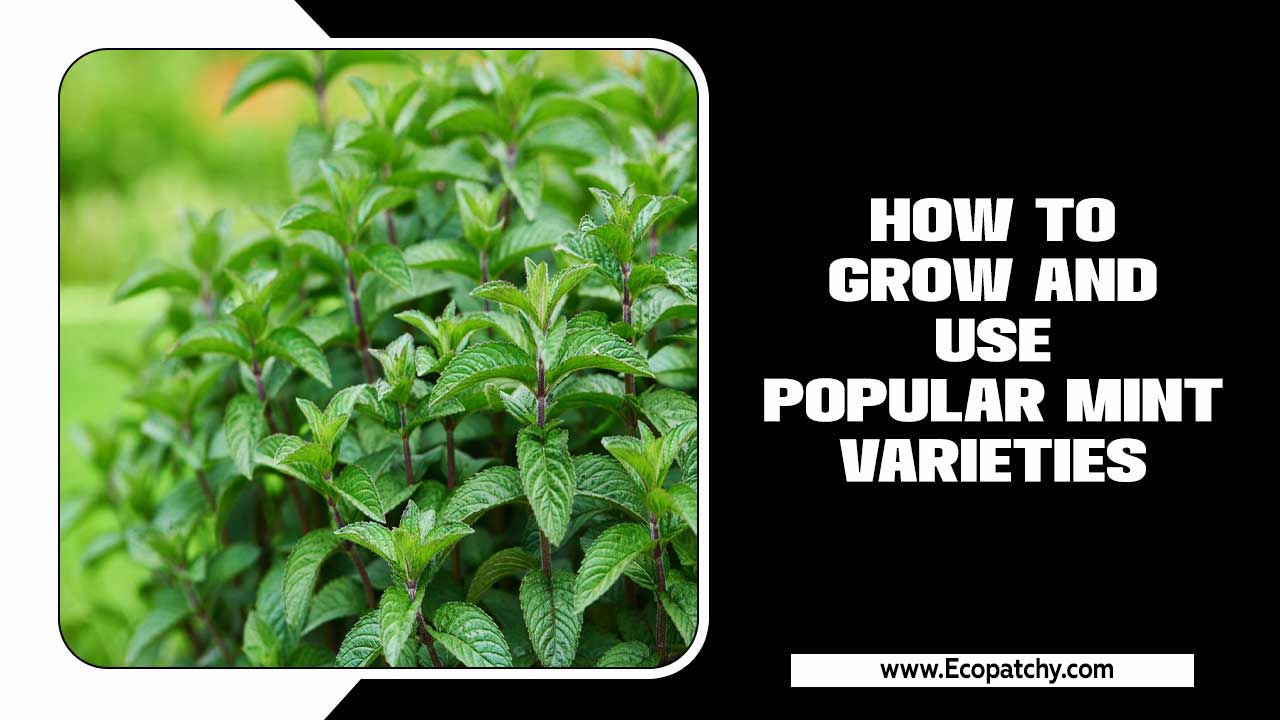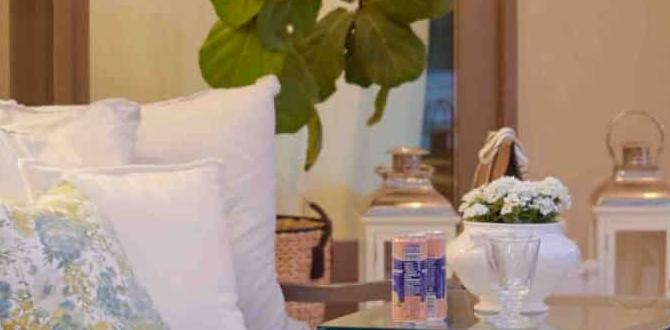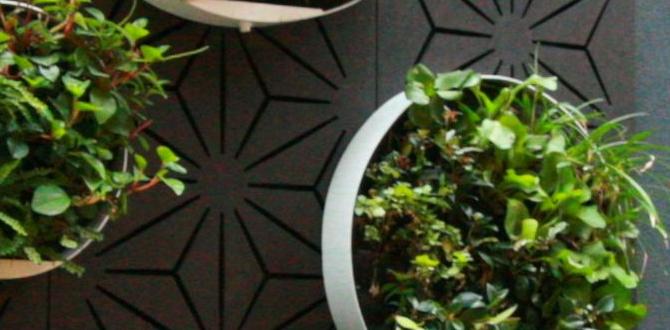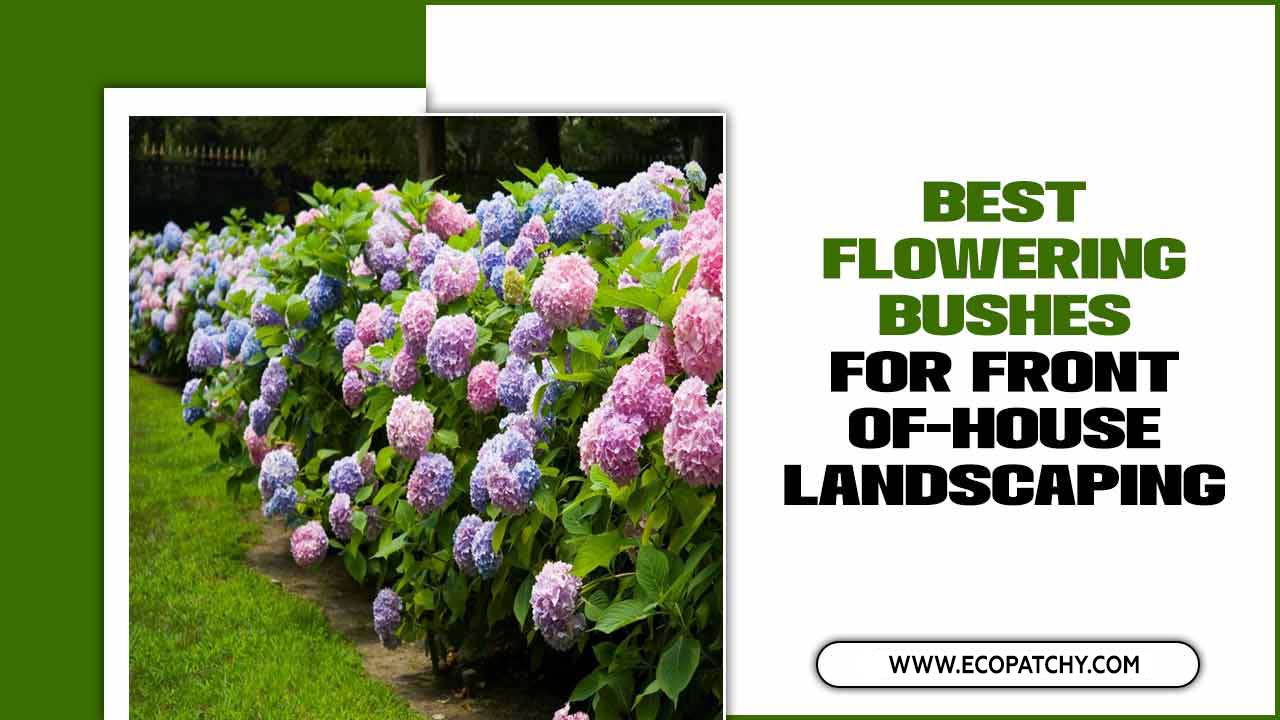Indoor plants are not just aesthetically pleasing, but they also offer several health benefits. They can purify our air, reduce stress, and even improve our mood.
But with so many types of indoor plants available in the market, deciding which one to get can be overwhelming. Here, we will cover everything you need to know about the best plants to grow indoors- from understanding the factors that affect plant growth to selecting the right containers and soil.
We will also share our top 20 picks of the best indoor plants that are easy to maintain and add beauty to your home. And if you’re already an experienced indoor gardener, don’t worry – we have advanced tips, too! So, let’s start creating your very own indoor garden today!
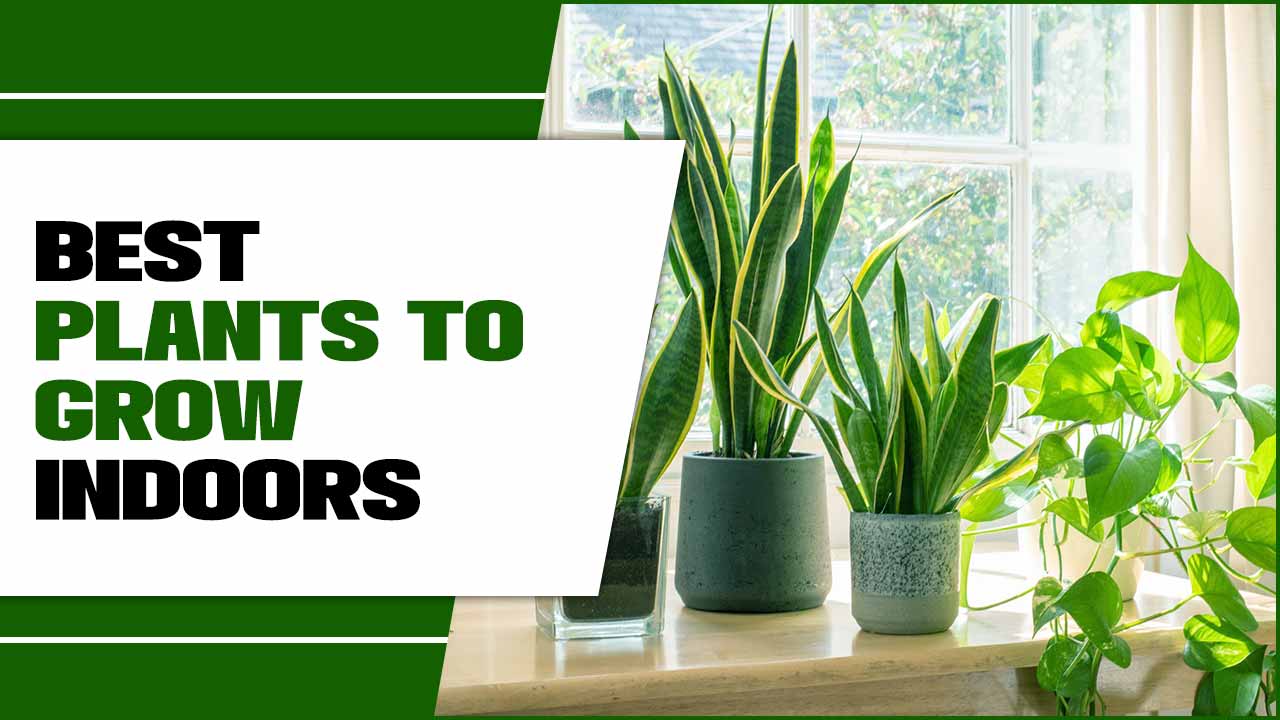
Benefits Of Indoor Plants
Indoor plants add aesthetic appeal to any space and offer a range of benefits that can improve your overall well-being. Whether you’re a seasoned plant enthusiast or just starting with indoor gardening, incorporating plants into your living or working space can bring numerous advantages to your physical and mental well-being. Here are some key benefits of having indoor plants:
- Improved Air Quality: Plants naturally filter the air by absorbing carbon dioxide and releasing oxygen. They can also remove toxins and pollutants, creating a cleaner and healthier indoor environment.
- Reduced Stress And Anxiety: Research has shown that being around plants can help reduce stress levels and promote calmness and relaxation. Indoor plants can create a soothing atmosphere in your home or office.
- Increased Productivity: Studies have found that having plants in the workplace can enhance productivity and concentration. Greenery can improve focus and mental clarity, making your tasks more efficient and effective.
- Enhanced Mood And Well-Being: Indoor plants have been linked to improved mood and overall well-being. They can help alleviate symptoms of depression and anxiety, creating a more positive and uplifting atmosphere.
- Natural Humidifiers: Some indoor plants release moisture into the air through transpiration. This can help increase humidity levels, especially in dry environments, which is beneficial for respiratory health.
- Improved Sleep Quality: Certain plants, such as lavender or jasmine, emit calming scents that can promote better sleep quality. These plants in your bedroom can create a relaxing environment conducive to restful sleep.
Factors To Consider For Indoor Plant Growth
Several factors must be considered when growing plants indoors to ensure successful growth. First and foremost, lighting is crucial. Most indoor plants require bright, indirect light, so placing them near a window or using artificial grow lights can help provide the necessary light. Temperature and humidity levels should also be considered, as different plants have varying preferences. Additionally, proper watering is essential for indoor plant growth.
Overwatering can lead to root rot, while underwatering can cause wilting and stunted growth. Finally, selecting the right type of soil and providing adequate drainage are important considerations for indoor plant health. Considering these factors, you can create the optimal conditions for your indoor plants to thrive.
Understanding Light Requirements For Indoor Plants
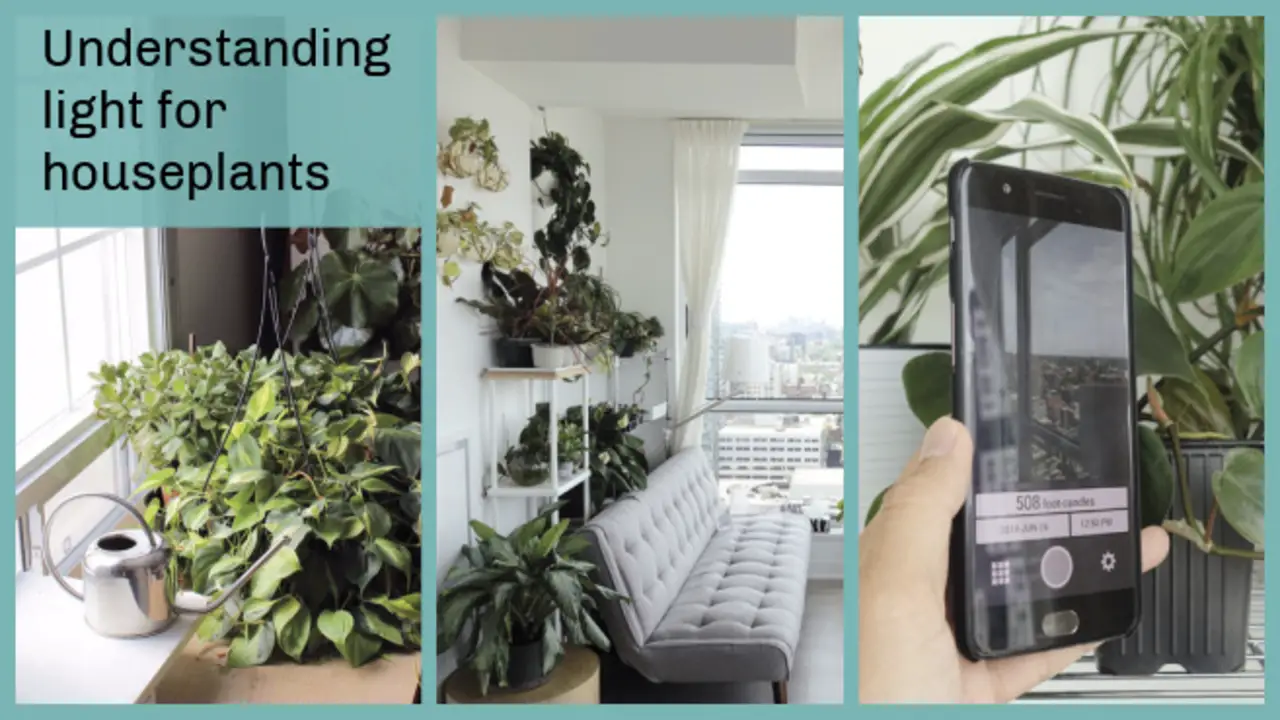
Understanding the light requirements for indoor plants is crucial to their growth and health. Different plants have different needs when it comes to light, so choosing the right spot in your home for each plant is important. Most indoor plants fall into three categories: low, medium, and bright.
Low-light plants can thrive in areas with minimal natural light, such as a north-facing window. Medium-light plants prefer bright, indirect sunlight and can be placed near an east or west-facing window. Bright-light plants need direct sunlight several hours a day and are best suited for south-facing windows or rooms with ample natural light. By understanding the light requirements of your indoor plants, you can ensure they receive the proper amount of sunlight for optimal growth and longevity.
Selecting The Right Containers And Soil
Selecting the right containers and soil is crucial when growing plants indoors. By paying attention to these factors, you can create a favourable environment for your indoor plants to thrive. Here are some key considerations to keep in mind:
- Container Size: Choose a container appropriate for your growing plant size. It should have drainage holes to prevent waterlogging.
- Material: Consider the material of the container. Plastic pots are lightweight and retain moisture well, while terracotta pots are porous and allow for better airflow.
- Soil Type: Select a high-quality potting mix that is well-draining and nutrient-rich. Avoid using garden soil, as it may contain pests or diseases.
- Ph Level: Different plants have different pH requirements. Adjust the pH of the soil if necessary to ensure optimal growth.
- Fertilizer: Indoor plants may require additional nutrients due to limited access to natural sources. Consider using a slow-release fertilizer or organic compost.
Essential Tools And Supplies For Indoor Gardening
When indoor gardening, having the right tools and supplies can make all the difference in ensuring the success of your plants. You can create a thriving indoor garden with these essential tools and supplies. Here are some essential items you’ll need to get started:
- Pots Or Containers: Choose pots that have drainage holes to prevent waterlogging and root rot.
- Soil: Use a well-draining potting mix specifically formulated for indoor plants.
- Watering Can Or Spray Bottle: These will help you provide your plants with the right amount of moisture.
- Fertilizer: Indoor plants typically require regular feeding to thrive, so invest in a good-quality fertilizer.
- Pruning Shears: Keep your plants looking their best by trimming away dead or overgrown foliage.
- Plant Labels: These will help you keep track of the different types of plants you have and their care requirements.
- Grow Lights (Optional): If your indoor space doesn’t receive enough natural light, consider investing in grow lights to ensure your plants get adequate light for photosynthesis.
Basic Care And Maintenance For Indoor Plants
Taking care of indoor plants is essential to ensure their health and longevity. Your indoor plants will flourish and bring beauty and life into your home by providing proper care and attention. Here are some basic care and maintenance tips for indoor plants:
- Watering: Most indoor plants prefer to be kept evenly moist, not soaking wet. Check the moisture level of the soil regularly and water accordingly.
- Light: Different plants have different light requirements. Some thrive in bright, direct sunlight, while others prefer indirect or low-light conditions. Place your plants in an area that meets their specific light needs.
- Temperature: Indoor plants generally prefer temperatures between 60-75°F (15-24°C). Avoid exposing them to extreme temperature fluctuations or drafts.
- Humidity: Many indoor plants thrive in higher humidity levels. If your home has dry air, consider using a humidifier or placing a water tray near your plants to increase humidity.
- Fertilizing: Indoor plants benefit from regular fertilizing during the growing season. Use a balanced liquid fertilizer diluted according to package instructions.
- Pruning: Regularly remove dead or yellowing leaves and trim back any leggy growth to promote healthy plant growth and maintain a neat appearance.
20 Best Plants To Grow Indoors
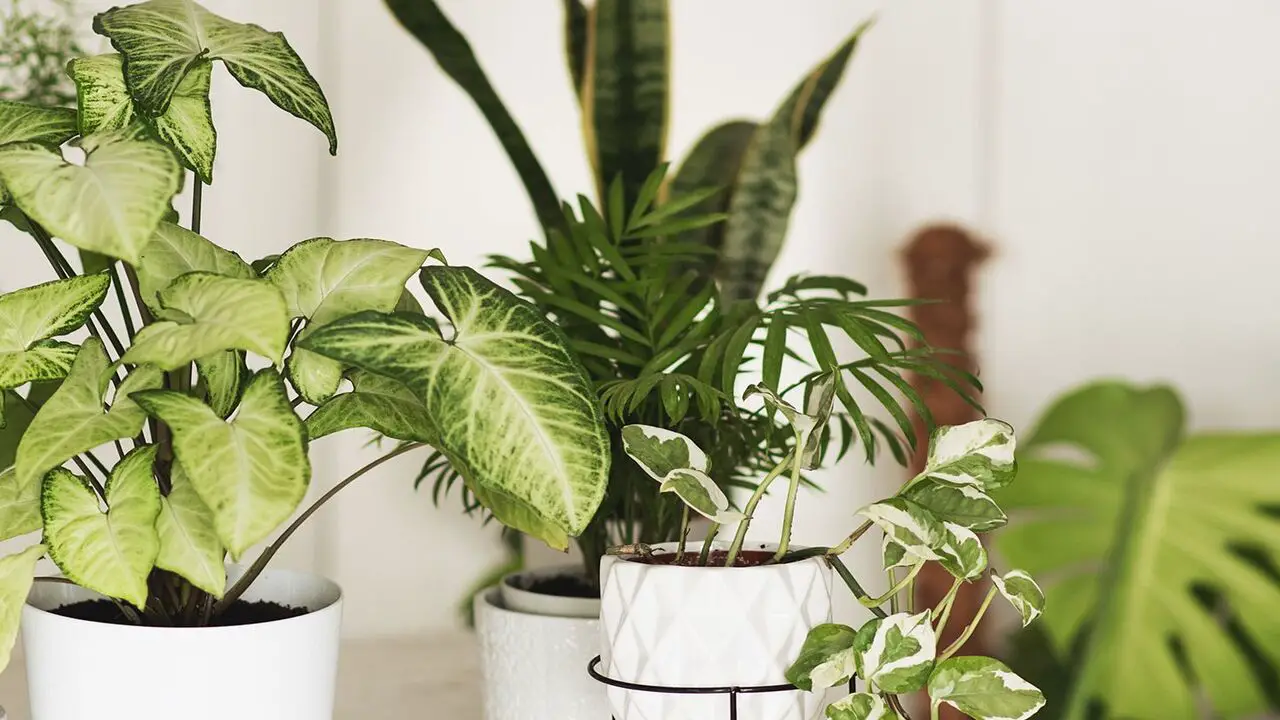
The Spider Plant is an easy-to-care-for indoor plant that is famous for its air-purifying qualities. Choosing the right plants is crucial when creating an inviting and green indoor space. With many options available, it can be overwhelming to determine which ones are the best for indoor cultivation. To simplify the process, we have curated a list of the 20 best plants to grow indoors that are visually appealing and easy to care for.
1.Spider Plant
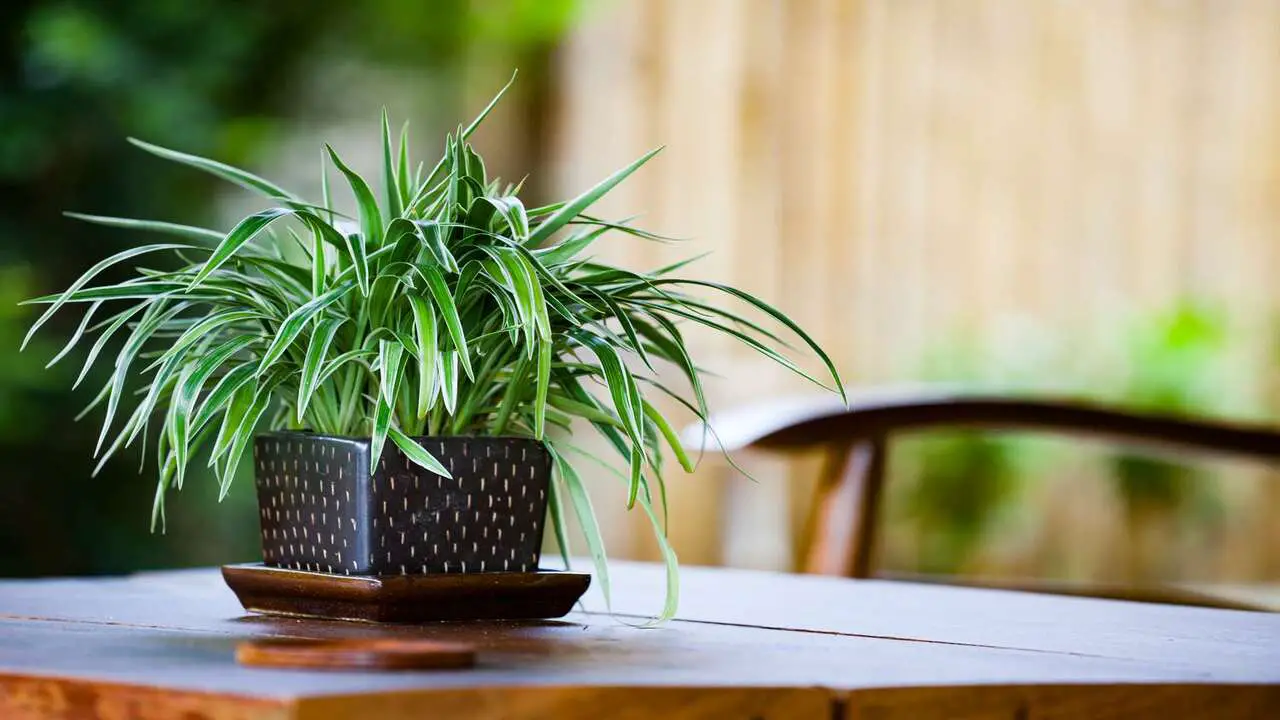
Spider plants, with their ability to remove toxins from the air, are a popular choice for indoor gardening. These low-maintenance plants can thrive in various light conditions, making them versatile options for any living space.
Spider plants produce baby siderites that can be easily propagated, making them great for expanding your indoor garden. Whether in hanging baskets or as trailing plants, they add a touch of greenery to any room. Plus, they are non-toxic to pets, ensuring a safe environment for furry friends.
2.Snake Plant
Snake plants, also known as Sansevieria, are highly adaptable and perfect for indoor environments with low light levels. Their striking long leaves add a touch of visual interest to any room. Snake plants are aesthetically pleasing and excellent air purifiers, removing toxins and improving air quality. This makes them a great choice for beginners or those with a busy lifestyle. Additionally, snake plants are incredibly resilient and can thrive in dry conditions.
3.Peace Lily
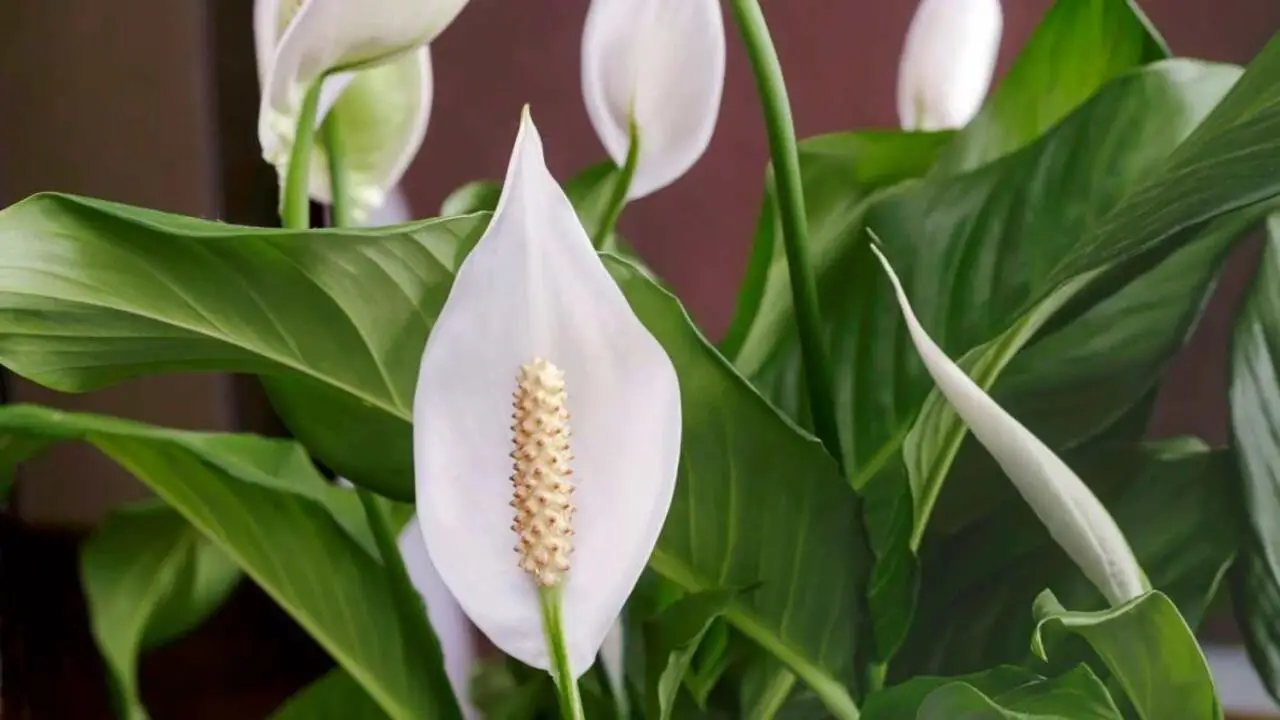
Peace lilies are renowned for their elegant white flowers and glossy green leaves. These stunning plants thrive in low-light conditions, perfect for shaded areas like a living room. Not only do peace lilies add beauty to indoor spaces, but they also act as excellent air purifiers, removing harmful toxins. It’s important to remember that peace lilies require regular watering and prefer moist soil. Additionally, they can be toxic if ingested, so keeping them out of reach of children and pets is essential.
4.Pothos
Pothos, an easy-to-grow houseplant, is perfect for beginners. Its beautiful variegated foliage adds a pop of colour to any indoor space. This low-maintenance plant thrives in low light conditions, ideal for spaces with less-than-ideal lighting. Pothos also acts as an air purifier, making it a great addition to any home or office. With proper care, it can grow long and trail down from hanging baskets or climb up trellises, enhancing your indoor space.
5.Aloe Vera
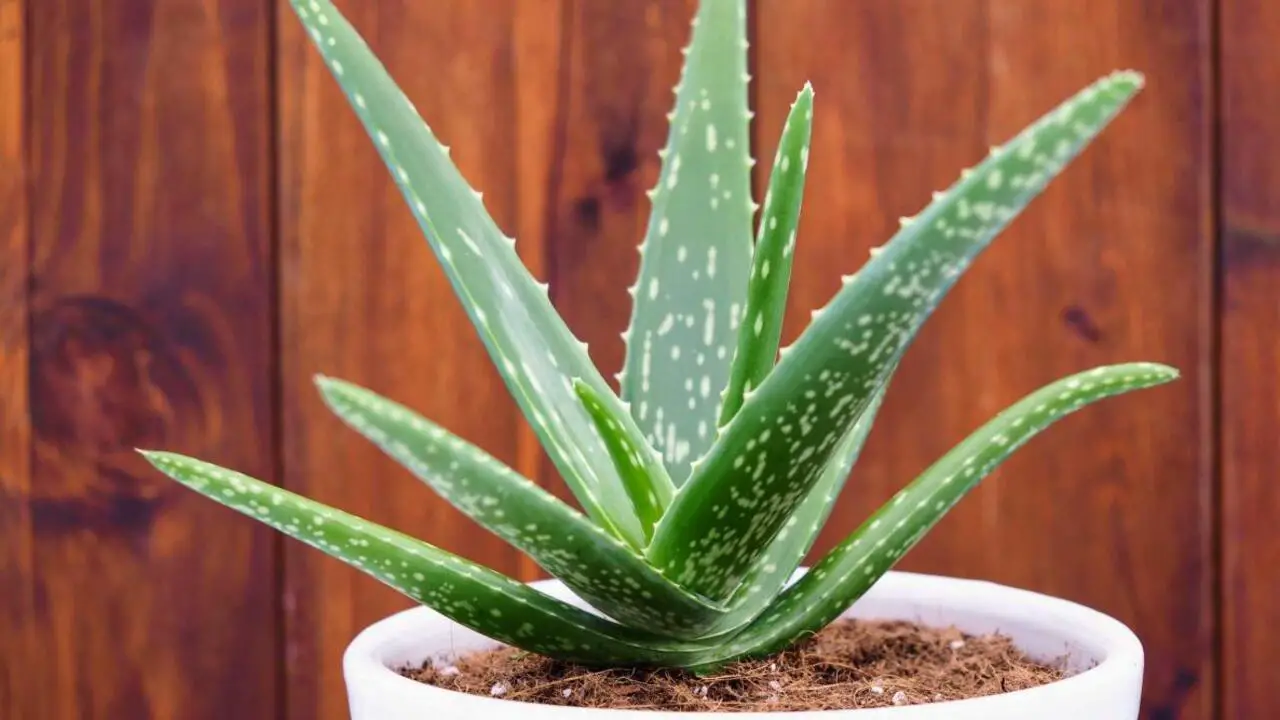
Aloe vera is a popular indoor plant known for its numerous health benefits. It can effectively purify the air by removing toxins, making it an excellent choice for improving indoor air quality.
Additionally, aloe vera gel is widely used in skincare and haircare products due to its moisturizing properties. With minimal care requirements and the ability to thrive in various lighting conditions, aloe vera is a versatile and low-maintenance plant. Its ease of propagation also makes it a great gift option.
6.ZZ Plant
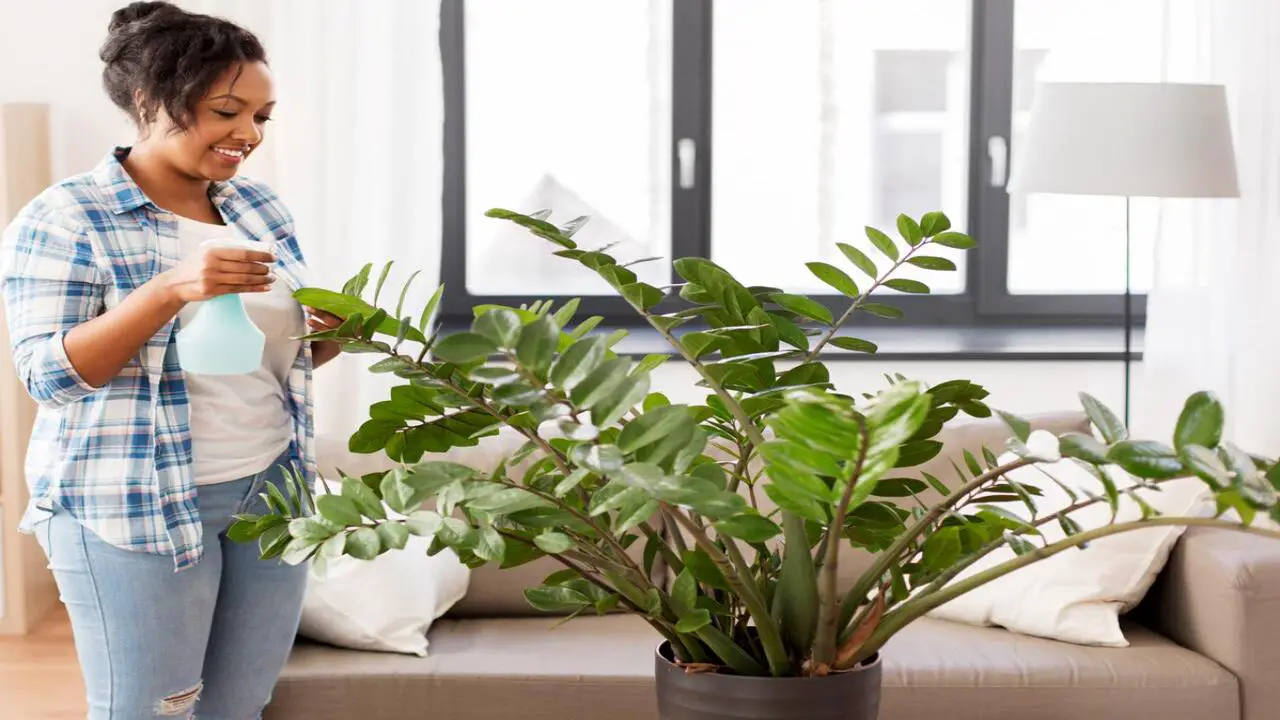
The ZZ plant, also known as Zamioculcas zamiifolia, is a popular choice for indoor gardening. It thrives in low-light conditions and can tolerate infrequent watering. Known for its air-purifying qualities, it’s a great addition to any home or office.
With shiny, dark green leaves, this plant adds elegance to any room. Occasional pruning encourages growth and maintains its shape. The ZZ plant’s ability to thrive in various conditions makes it a versatile and low-maintenance option for indoor gardeners.
7.Chinese Evergreen
Chinese Evergreen is a popular indoor plant known for its attractive foliage and ease of care. It thrives in low to medium light conditions, making it ideal for homes and offices. Chinese Evergreen also helps purify the air by removing toxins like benzene and formaldehyde. With occasional watering and fertilizing, this plant can thrive for years. There are many varieties available, each with unique leaf patterns and colours.
8.Fiddle Leaf Fig
The Fiddle Leaf Fig is a popular indoor plant known for its large, violin-shaped leaves that can reach up to three feet long. It thrives in bright, indirect light and requires well-draining soil. While regular watering is important, overwatering can lead to root rot. Fertilizing every two to four weeks during the growing season promotes healthy growth. Pruning helps maintain the plant’s shape and prevents it from becoming too tall or top-heavy.
9.Rubber Plant
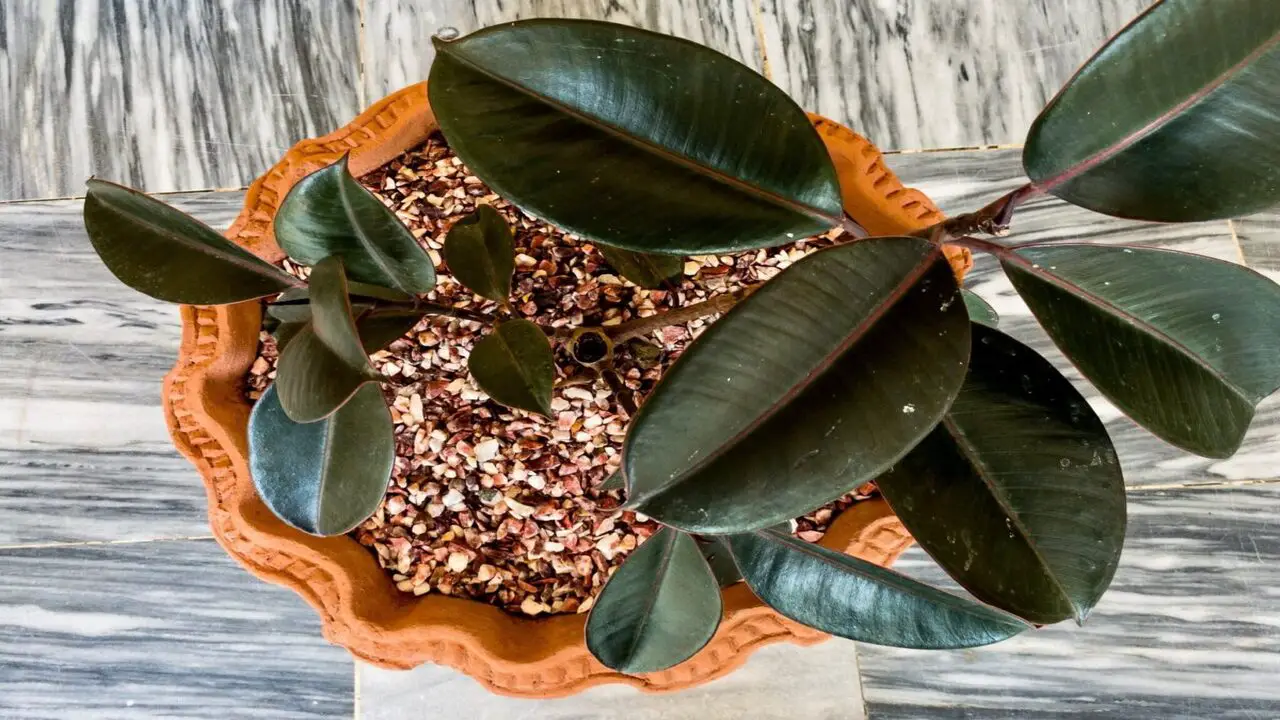
Rubber plants are low-maintenance and require minimal care. Their large, glossy leaves bring elegance to any indoor space. These plants are decorative and act as natural air purifiers, removing toxins from the air. Rubber plants can thrive in low-light conditions and can tolerate occasional neglect. Growing up to 8 feet tall, they make a statement in any room.
10.Philodendron
Philodendrons are a popular choice for indoor plants due to their low maintenance requirements and ability to thrive in low-light conditions. Varieties such as the Heartleaf, Brasil, and Silver Sword offer a range of options for plant enthusiasts.
Beyond their decorative foliage, philodendrons also have air-purifying properties, filtering out toxins like formaldehyde and benzene. Philodendrons are easy to care for with well-draining soil and regular watering when the top inch feels dry. Additionally, they can be easily propagated through stem cuttings, making them a great choice for expanding your plant collection.
11.Boston Fern
Boston ferns are well-known for their air-purifying qualities and ability to remove toxins. They thrive in bright, indirect light and require regular watering to moisten the soil. These ferns prefer high humidity and can benefit from misting or placing them on water-filled pebbles. Trimming dead or yellowing fronds is essential for promoting healthy growth. With their low-maintenance nature, Boston ferns are a popular choice for adding greenery to indoor spaces.
12.Devil’s Ivy
Devil’s Ivy, known as pothos, is a popular indoor plant loved for its low maintenance and air-purifying properties. It thrives in various lighting conditions, making it versatile for any room in your home. With easy propagation, you can create new plants effortlessly. Regular pruning ensures the plant remains healthy and lush. Remember to keep Devil’s Ivy away from pets and children since it can be toxic if ingested.
13.Dracaena
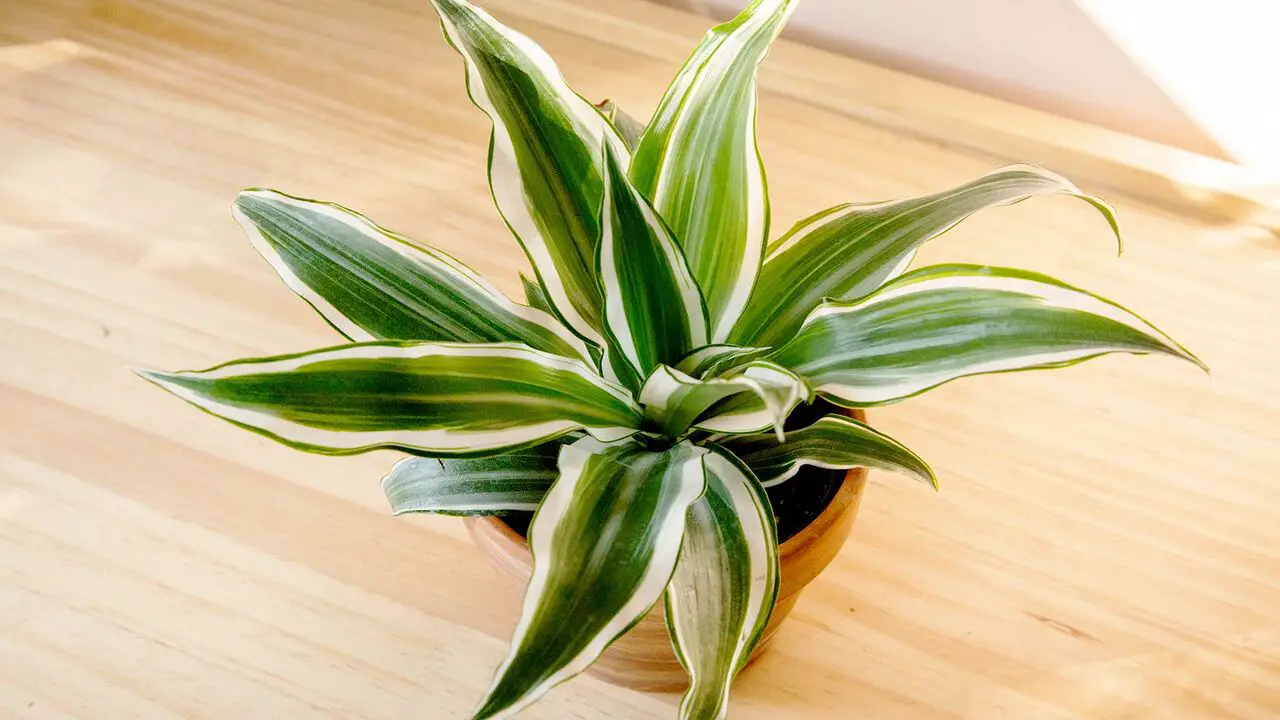
Dracaena plants are a popular choice for indoor gardening due to their attractive foliage and easy care requirements. Originating from Central America, these plants thrive in bright, indirect sunlight and tolerate low light levels. With their air-purifying properties and ability to reduce stress, Dracaena plants make a great addition to any living room or office space.
There are different varieties of Dracaena plants to choose from, each with its unique features. Proper care for Dracaena includes providing the right amount of water, ensuring they have enough bright light, and fertilizing them regularly.
However, avoiding overwatering and placing them in cold drafts is important. If any problems arise, such as leaf yellowing or browning, it’s crucial to address them promptly by adjusting the lighting or watering schedule.
Dracaena plants can be easily found at your local nursery or a grocery store, making them a convenient choice for beginners and experienced plant enthusiasts. So why not bring decorative foliage into your space with these beautiful, low-maintenance plants?
14.Jade Plant
Jade plants are renowned for their low-maintenance nature and ability to thrive in bright, indirect light. With their fleshy leaves, they can store water, making them drought-tolerant. According to Feng Shui, having a jade plant at home can bring good luck and prosperity. These plants are also easy to propagate, making them perfect for sharing with friends. Also, jade plants are believed to purify the air and improve indoor air quality.
15.Spiderwort
Spiderwort plants, characterized by their long, slender leaves and vibrant purple flowers, are an excellent choice for indoor gardening. These plants thrive in low-light conditions and can tolerate indirect sunlight. Spiderwort plants are decorative and have air-purifying properties, enhancing the air quality in your living space.
With minimal watering requirements, they are easy to care for. Moreover, spiderwort plants can be propagated by dividing and replanting the clumps, making them a versatile option for plant enthusiasts.
16.Swiss Cheese Plant
With their large, fenestrated leaves, Swiss cheese plants offer a tropical touch to any living space. These plants thrive in bright indirect light but can also tolerate lower light conditions. Not only do they add beauty to a room, but Swiss cheese plants are also known for their air-purifying properties, helping to remove toxins from the air. With regular watering and well-draining soil, these slow-growing plants can become a statement piece in any home or office.
17.Areca Palm
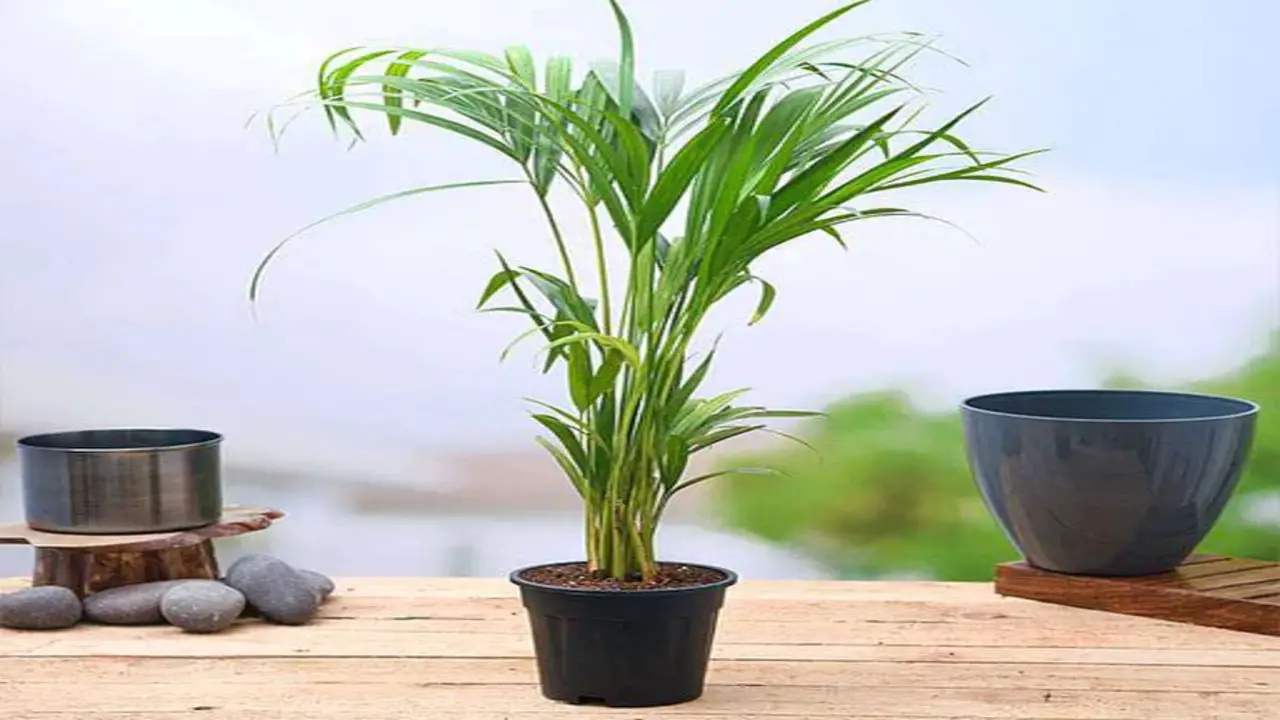
Areca palms are well-loved for their tropical appearance and elegant, feathery fronds. These plants thrive in bright indirect light but can also tolerate lower light conditions. Besides being a beautiful addition to any living room, Areca palms are excellent at purifying the air by removing toxins. They require regular watering and well-draining soil to thrive. With their fast growth potential, Areca palms can reach heights up to 6-7 feet indoors.
18.African Violet
African violets are a popular indoor gardening choice with their colourful flowers and fuzzy leaves. They thrive in bright indirect light, making them perfect for placement near north or east-facing windows.
Regular watering and well-draining soil are essential to prevent root rot. Their compact size makes African violets ideal for small spaces or tabletop displays. Available in various colours, they add a beautiful touch to any indoor garden.
19.English Ivy
English Ivy is a versatile plant that can be grown as a trailing vine or in a hanging basket. It thrives in bright, indirect light, making it perfect for a sunny spot in your living room. English Ivy is well-known for its air-purifying properties, removing toxins and creating a healthier environment. It requires regular watering and well-draining soil to prevent overwatering. You can easily propagate English Ivy by rooting cuttings in water or soil.
20.String of Pearls
String of pearls is a unique succulent with trailing stems adorned with small, round leaves. It thrives in bright indirect light and can be placed near a south or west-facing window. This drought-tolerant plant requires infrequent watering, making it a low-maintenance choice for indoor gardens.
The string of pearls is perfect for hanging baskets or cascading down shelves or bookcases, adding a touch of decorative foliage to any living room. Propagating this plant is easy by planting stem cuttings in well-draining soil.
Advanced Tips For Indoor Plant Care
Taking care of indoor plants can be a rewarding and fulfilling hobby. To ensure the health and longevity of your indoor plants, implementing these advanced tips can ensure that indoor plants thrive and bring beauty into your home or office space. Here are some advanced tips for indoor plant care:
- Monitor Humidity Levels: Indoor environments can be dry, especially during winter. Invest in a humidifier or place a water tray near your plants to increase humidity.
- Rotate Your Plants: To promote even growth, rotate your plants every few weeks so that all sides receive adequate light exposure.
- Prune Regularly: Regular pruning helps to maintain the shape and size of your plants. Remove any dead or yellowing leaves to encourage healthy growth.
- Fertilize Appropriately: Indoor plants have different fertilizer needs compared to outdoor ones. Use a slow-release fertilizer formulated for indoor plants and follow the recommended dosage instructions.
- Watch Out For Pests: Indoor plants like aphids, spider mites, and fungus gnats are susceptible to pests. Inspect your plants regularly for signs of infestation and take appropriate measures to eliminate them.
Troubleshooting Common Indoor Plant Issues
Indoor plants can bring life and beauty to any space but can also come with their fair share of issues. If you’re experiencing problems with your indoor plants, don’t worry – there are solutions! Here are some common issues and troubleshooting tips to help you keep your indoor plants thriving:
- Yellowing Leaves: This could indicate overwatering or nutrient deficiencies. Ensure you’re watering your plants properly, and consider adding fertilizers to provide the necessary nutrients.
- Wilting: Wilting can be caused by underwatering or poor drainage. Check the soil moisture level and adjust your watering schedule accordingly. Also, ensure that your pots have proper drainage holes.
- Pests: Common pests like aphids, mealybugs, and spider mites can wreak havoc on indoor plants. Use organic pest control methods such as neem oil or insecticidal soap to eliminate these pesky critters.
- Lack Of Growth: If your plants aren’t growing as expected, it may be due to insufficient light or improper temperature. Ensure your plants get enough light (consider using grow lights if needed) and maintain the optimal temperature range for each plant species.
Addressing these common issues ensures that your indoor plants stay healthy and vibrant all year round.
Creating Beautiful Indoor Plant Displays
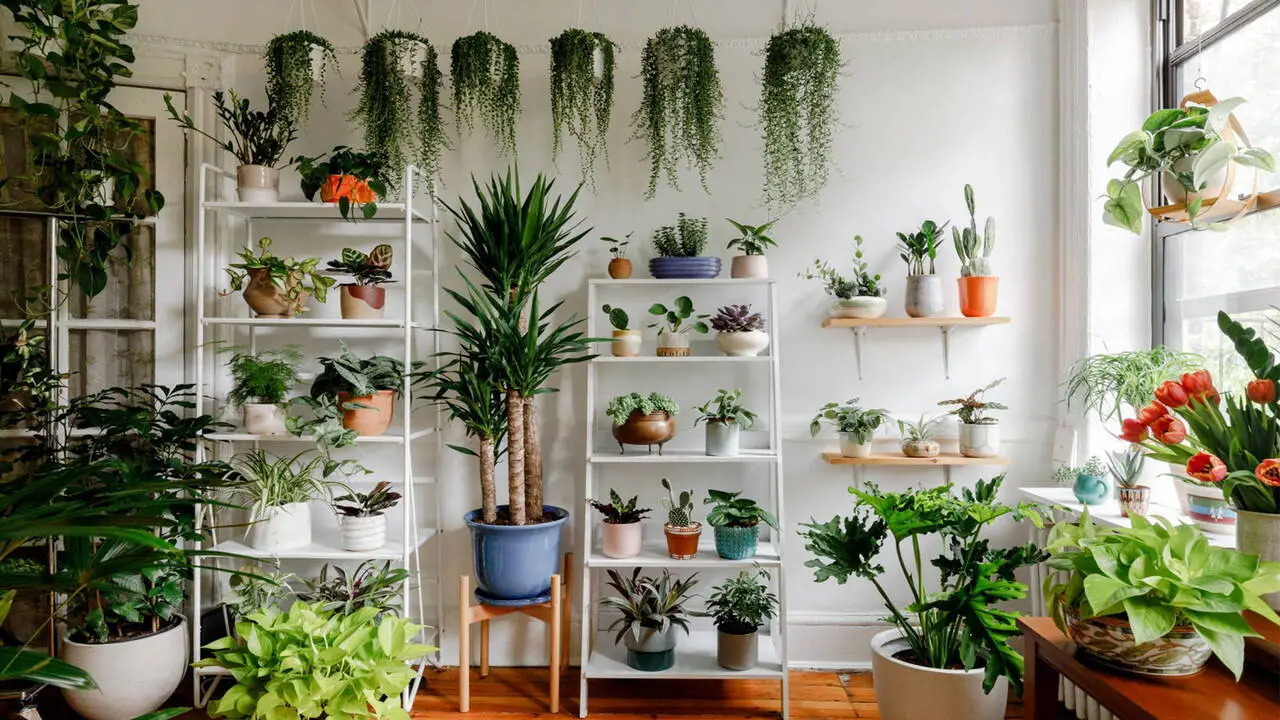
Creating beautiful indoor plant displays can add a touch of nature and beauty to any space. When choosing plants for your indoor display, it is important to consider the lighting conditions in your home. Some plants thrive in bright, direct sunlight, while others prefer indirect or low-light conditions.
Additionally, consider the size and shape of the plants you choose and their growth habits. This will help ensure that your display is visually appealing and balanced. You can also incorporate different types of pots and planters to add interest and variety to your display.
Remember to regularly water and care for your plants to keep them healthy and thriving. Creativity and attention to detail allow you to create stunning indoor plant displays that bring life and freshness to your home or office.
Propagating Indoor Plants
Propagating indoor plants is a great way to expand your plant collection and save money. You can use several methods to propagate indoor plants, including stem cuttings, leaf cuttings, and division. Stem cuttings involve cutting from the parent plant and placing it in water or soil until it develops roots.
Leaf cuttings involve removing a leaf from the parent plant and allowing it to develop roots in water or soil. Division involves separating the parent plant into smaller sections, each with its roots and stems. Whichever method you choose, provide proper care and attention to the new plants as they establish root systems and grow into healthy, thriving plants.
Conclusion
Growing indoor plants adds beauty to your space and provides numerous benefits for your overall well-being. They purify the air, reduce stress, increase productivity, and create a calming environment. Consider light requirements, containers, soil, and essential tools when choosing indoor plants. Some popular indoor plants include Spider, Snake, Peace Lily, Pothos, Aloe Vera, and ZZ Plant.
Remember to provide proper care and maintenance, troubleshoot common issues, and create beautiful displays. You can even propagate your indoor plants to expand your collection. So go ahead and bring the beauty of nature indoors with these best plants to grow indoors.
Frequently Asked Questions
1.Which Plant Is Best For Inside Home?
Ans: Some ideal plants for indoor spaces include snake plants, pothos, spider plants, and peace lilies. Snake plants are low-maintenance and can enhance air quality. Pothos is a trailing plant that can be grown in hanging baskets or trained to climb walls. Spider plants are easy to care for and can help reduce indoor pollutants.
2.Which Plants Purify Indoor Air?
Ans: Some great indoor plants for purifying air include spiders, peace lilies, snakes, and aloe vera. These plants effectively remove toxins like formaldehyde, benzene, and xylene from the air. Other options, such as Boston fern, English ivy, and bamboo palm, also help improve air quality and add aesthetic appeal to your indoor space.
3.Which Plant Is Best For Mental Health?
Ans: Studies have shown that certain plants can positively impact mental health. Lavender, peppermint, and jasmine are known to be particularly beneficial. Lavender has relaxing properties, peppermint can aid focus and concentration, and jasmine has calming effects to reduce anxiety.
What Is The Easiest Indoor House Plant?
Ans: Pothos is considered one of the easiest indoor house plants to grow with their low maintenance and ability to tolerate low light conditions. They thrive in different types of soil and don’t require frequent watering. Their beautiful foliage in various shades of green makes them a popular choice for indoor gardening enthusiasts.
4.What Is The Healthiest Indoor Plant?
Ans: The healthiest indoor plant effectively purifies the air and requires minimal maintenance. Some of the healthiest options include the snake plant, peace lily, spider plant, ZZ Plant, and aloe vera. These plants have been proven to reduce air pollutants like benzene and formaldehyde while thriving in low-light conditions with minimal watering.

